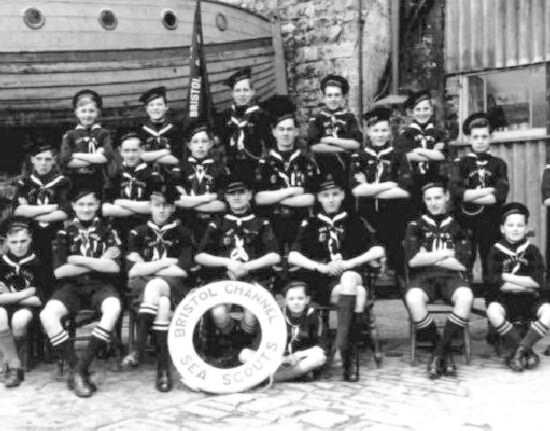
Figure 1.--This English photograph was taken in 1936. It shows a group of Bristol Channel Sea Scouts. |

|
The Boy Scout Sea Scouting program, like Scouting itself, was conceived in England. English Sea Scouting apparently began at a Boy Scout camp fire. Among other topics, Lord Baden-Powell suggested that older Scouts might wanst to learn about handling boats and seamanship. He thought that there was a need for young men to learn naval skills to prepare for service on ships. The idea sparked some interest. The first English Scouts were, in effect, both regular Boy Scouts and Sea Scouts. Baden-Powell felt that the best approach was a seperate branch of Scouting which could focus on a program entirely devoted to the teaching of nautical skills. Baden-Powell asked his brother Warington to take charge of the first specialized Scout branch. Warington was interested. Bill Harvey was the first Sea Scout skipper. Warington wrote a book entitled Sea Scouting and Seamanship for Boys. The book and the idea proved very popular in England and gradually found its way to other countries. The English Sea Scout organization was formally charered in 1910. This was also the year that Scouting was chartered in the United States.
The Boy Scout Sea Scouting program, like Scouting itself, was conceived in England. English Sea Scouting apparently began at a Boy Scout camp fire. Among other topics, Lord Baden-Powell suggested that older Scouts might wanst to learn about handling boats and seamanship. Baden-Powell's army career is often sited as a primary source od Scouting, but Baden-Powell's boyhood love of the outdoos was another factor. And he also loved boating qnd would camp with his brothers on islands they they reached with boats. Baden-Powell concluded early on that boys should also learn naval skills. Britain of course reled heavily on both the Royal Navy and the merchant marine. There already exised great interest among British boys in the sea. (The British Army had to put some effort into recruiting. The Royal Navy without any recruiting effort had been more boys attempting to enlist than they needed.) The first English Boy Scouts actually persued some marine activities. The English Sea Scout organization was formally charered as a separate program in 1910.
Baden-Powell felt that the best approach was a seperate branch of Scouting which could focus on a program entirely devoted to the teaching of nautical skills. They did not entirely do away vwith the standard Scout program. It tended to be more of a bybred program. This varies from contry to country. The American program, for example, was for oldr boys and was n entirely sea-oriented program.
Baden-Powell asked his brother Warington to take charge of the first specialized Scout branch. Warington was interested. Bill Harvey was the first Sea Scout skipper. Warington wrote a book entitled Sea Scouting and Seamanship for Boys. The book and the idea proved very popular in England and gradually found its way to other countries.
Knot tieing has been a stape for Scouts from the very beginning. Knots of course were very important for sailors because of all the rigging used on ships until relatively recently. Baden-Powell had insisted that the first Boy Scouts learn to tie three knots (the reef knot, clove hitch, and a sheet bend).
Sea Scout programs vary. In most countries Sea Scouts begin after Cubs, although Sea Scout units might have an associated Cub unit. We notice several English Sea Scout units with Cubs coming a;omg for various trips and activities.
The Cubs would have a choice as to join the Sea Scout unit when they were old enough or could they could jpin a srandard Scout unit if they preferred. We see that in Britain and Empire contries. We have not noted it in America. The assiociate Cubs had standard Cub programs and not a special Cub sea program. They alsp wore standard Cub uniforms.
The Sea Scouting uniforms in particul tend to be quite destinctive following the national naval uniforms. This of course meant the Royal Navy in Britain.
Navigate the Historic Boys' Uniform Chronology Pages:
[Return to the Main chronologies page]
[The 1900s]
[The 1910s]
[The 1920s]
[The 1930s]
[The 1940s]
[The 1950s]
[The 1960s]
[The 1970s]
[The 1980s]
[The 1990s]
[The 2000s]
Navigate the Historic Boys' Uniform Web Site:
[Activities]
[Biographies]
[Chronologies]
[Countries]
[Essays]
[Garments]
[Organizations]
[Religion]
[Other]
[Introduction]
[Bibliographies]
[Contributions]
[FAQs]
[Questions]
[Unknown images]
[Boys' Uniform Home]
Navigate the Historic Boys' Uniform Web organization pages:
[Return to the Main English Scout page]
[Return to the Main national Sea Scout page]
[Boys' Brigade]
[Boys Club]
[Camp Fire]
[Hitler Youth]
[National]
[Pioneers]
[Royal Rangers]
[Scout]
[YMCA]
